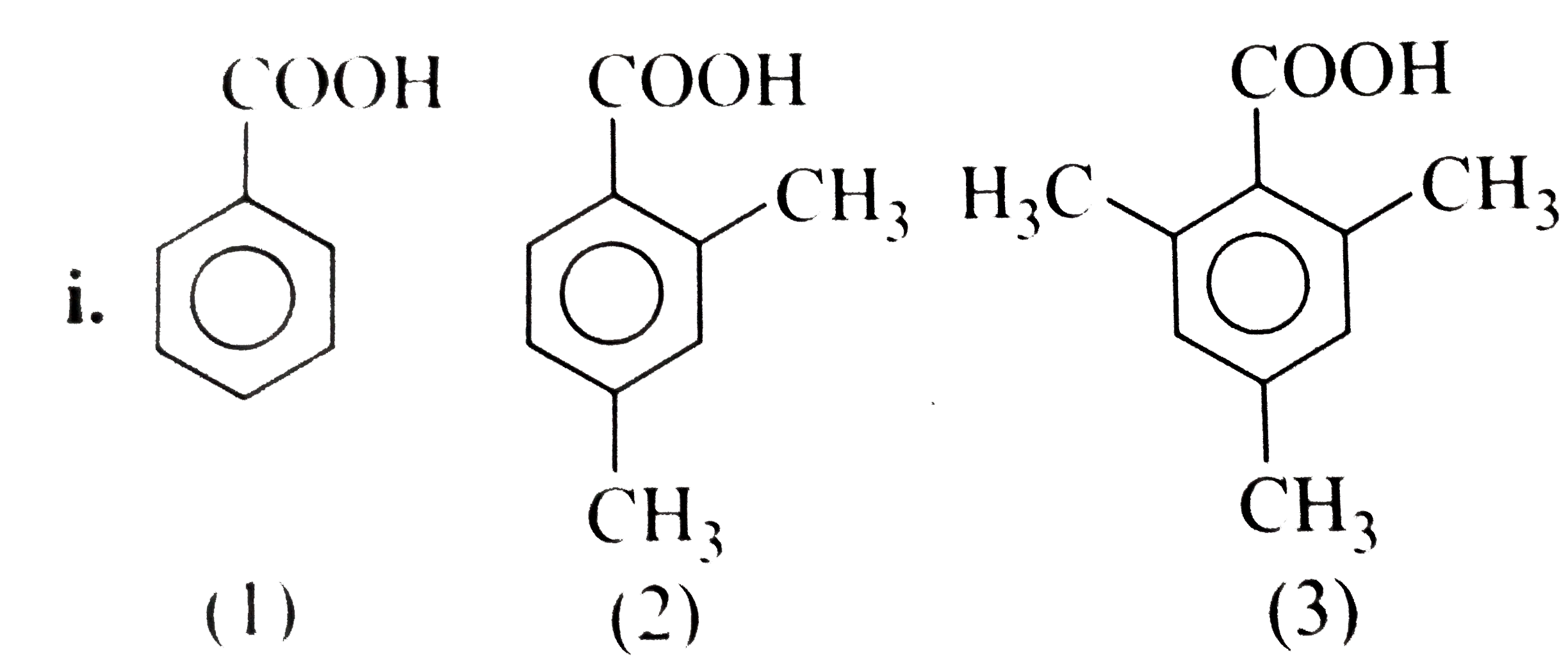C2H5CHOand(CH3)2COcan be distingushed by testing with
Phenyl hydrazine
Hydroxylamine
Fehling solution
Sodium bisulphite
The correct Answer is:C
Topper's Solved these Questions
- BOOK - A2ZCHAPTER - ALDEHYDES, KETONES AND CARBOXYLIC ACIDEXERCISE - Cannizaro'S Reaction15videos
ALDEHYDES, KETONES AND CARBOXYLIC ACID
- BOOK - A2ZCHAPTER - ALDEHYDES, KETONES AND CARBOXYLIC ACIDEXERCISE - Miscellaneous Reactions Of Aldehydes And Ketones11videos
ALDEHYDES, KETONES AND CARBOXYLIC ACID
- BOOK - A2ZCHAPTER - ALDEHYDES, KETONES AND CARBOXYLIC ACIDEXERCISE - Section D - Chapter End Test30videos
ALDEHYDES, KETONES AND CARBOXYLIC ACID
- BOOK - A2ZCHAPTER - ALCOHOLS, PHENOLS AND ETHERSEXERCISE - Section D - Chapter End Test30videos
ALCOHOLS, PHENOLS AND ETHERS
- BOOK - A2ZCHAPTER - BIOMOLECULESEXERCISE - Section D - Chapter End Test30videos
BIOMOLECULES
Similar Questions
Arrange the following
(i) −CHO,−COCH3,−COOH,−COCl,−CONH2,−COOCH3,−COO− in dereasing order of nucleophilic addition.
(ii) CH3CHO,CH3COCH3,HCHO,C2H5COCH3 in decreasing order of nucleophilic addition.
(iii)CH3COCH2CHO,CH3COCH3,CH3CHO,CH3COCH2COCH3 in increasing order of expected enol content.
(iv) CH3CHO,C6H5CHO,(CH3)CO,FCH2CHO in decreasing order of reactivity

in decreasing order of reactivityView Solutiona. Acid halides, anhydrides, esters and amides, all of them contain (C=O) group but none of them gives test for (C=O) group, i.e., they do not form oximes, hydrazones, and DNP derivatives, etc. Why?
b. Arrange the following in the decreasing order of nucleophilic addition.
i. (1)−CHO
(2)−COCH3
(3)−COOH
(4)−COCI
(5)−CONH2
(6)−COOCH3
(7)−COOΘ
ii. (1)CH3CHO
(2)CH3COCH3
(3)HCHO
(4)CH2H5CH2COCH3
iii. (1)CH3COCH3
(2)C6H5COCH3
(3)C6H5COC6H5
(4)C6H5CH2COCH3
iv. (1)C6H5CHO
(2)ρ−CH3.C6H4.CHO
(3)ρ−OH.C6H4.CHO
(4)ρ−NO2.C6H4.CHO
(5)ρ−CI.C6H4.CHO
v. (1)HCHO
(2)CH3CHO
(3)CH3COCH3
(4)CI3CCHO
c. Arrange the following in the increasing order of ease of hydrolysis.
(1)CCH3COOC2H5
(2)CH3COCI
(3)(CH3CO)2O
(4)CH3CONH2
d. Arrange the following in the increasing order of ease of acid-catalysed esterification of:
i.
ii. (1)CH3CH2COOH
(2)(CH3)2CHCOOH
(3)(CH3)3CCOOH
iii. (1)CH3CH2CH2OH
(2)CH3CHOHC2H5
(3)(CH3)2C(OH)C2H5
e. Arrange the following esters in decresing order of ease of alkaline hydrolysis.
i. (1)HCOOCH3
(2)CH3COOCH3
(3)(CH3)3CCOOCH3
(4)(CH3)2CHCOOCH3
ii. (1)CH3COOCH3
(2)CH3COOC(CH3)3
(3)CH3COOCH(CH3)2
(4)CH3COOCH2CH3
iii. (1)C6H5COOCH3
(2)ρ−CH3O−C6H4−CCOOCH3
(3)ρ−NO2−C6H4−COOCH3
(4)ρ−Cl−C6H4−COOCH3View Solution
Knowledge Check
- Question 1 - Select One
C2H5CHO and (CH3)2 can be distinguished by testing with
APhenyl hdrazineBHydrozylamineCFehling solutionDSodium bicarbonate - Question 2 - Select One
CH3CHO and C6H5CH2CHO can be distiguished chemically by
ABenedict's testBIodoform testCTollen's reagent testDFehling's solution test. - Question 3 - Select One
CH3CHO and C6H5CH2CHO can be distiguished chemically by
ABenedict's testBIodoform testCTollens' reagent testDFehling's solution test
CH3CHO and C6H5CH2CHO can be distinguished chemically by
View SolutionCH2CHOandC6H5CH2CHO can be distinguished chemically by
View SolutionCH3CHO and C6H5CH2CHO can be distinguished chemically by
View SolutionC2H5OH and CH3COOR can be separated from CH3CHO using
View SolutionC6H5−CH=CH−CHO is
View Solution


